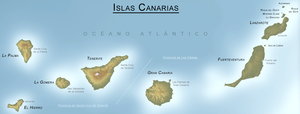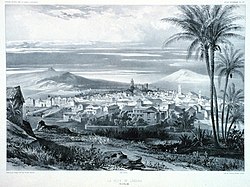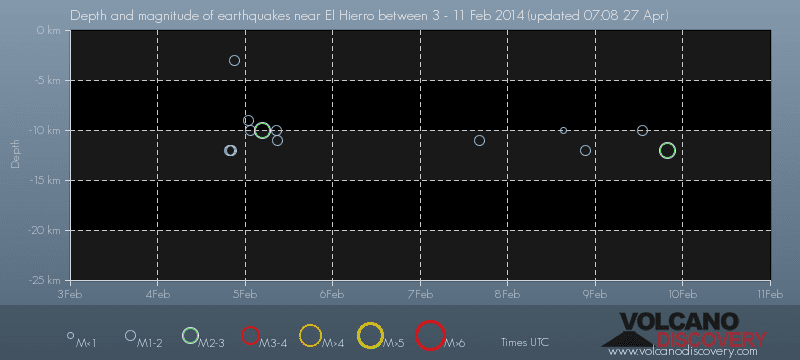
CANARY ISLANDS- ISLAS CANARIAS- KANARISCHE INSELN | |||||||||||||||||||||||||||||||
BLOG/ Startseite | |||||||||||||||||||||||||||||||
| internal links > | START | HOME | SOLAR BLOG | VOLCANO WATCH | VOLCANO MAPS | external links > | IGN | AVCAN | AVCAN/ fb. | EMSC | GVP | NOAA |

update, 20210919
volcano eruption island of La Palma
update 20210917
issue:
intensive unusual earthquake swarm ;
VOLCANIC MAGMA INTRUSION
Canary islands La Palma- Cumbre Vieja
begin: Sept 11 2021 ongoing
EVENT MAGNITUDE/ REGION AND TIME
LATITUDE/ LONGITUDE >
28.60 N ; 17.86 W
DEPTH > 6 km
Canary islands La Palma- Cumbre Vieja
intensive unusual earthquake swarm ; VOLCANIC MAGMA INTRUSION
begin: Sept 11 2021 ongoing 6 km
other informations: external links/ Videos
previous quakes /afterquakes more than: 100 strength M 2.0 - M 7.5 damages  Vulkan-News 16.09.2116. September 2021 von Marc Szeglat
Vulkan-News 16.09.2116. September 2021 von Marc SzeglatAm Cumbre Vieja auf La Palma nahm die Bodenhebung deutlich zu. Die Aktivität am Fagradalsfjall fluktuiert. Der Semeru ist explosiv aktiv.

Am Cumbre Vieja auf La Palma nahm die Bodenhebung deutlich zu. Die Aktivität am Fagradalsfjall fluktuiert. Der Semeru ist explosiv aktiv.
Cumbre Vieja: Inflation gestiegen
Staat: Spanien | Koordinaten: 28.57, -17.84 | Eruption: Magmenintrusion
Am Vulkan auf La Palma ist die Inflation schnell gestiegen: die Bodenhebung beläuft sich nun auf bis zu 6 cm. Das geht aus einem Bericht vom IGN hervor. Gleichzeitig verlagerten sich die Beben in geringeren Tiefen und man geht davon aus, dass ein Magmatischer Gang bis in 8 km Tiefe vordrang. In den letzten 24 Stunden verringerte sich die Seismizität und es schaut so aus, als wäre der Magmenaufstieg (vorerst) gestoppt. Der Dyke steckt fest. Das heißt aber noch nicht, dass die Gefahr eines Vulkanausbruchs auf der Kanareninsel gestoppt ist. Für gewöhnlich folgen mehrere Phasen mit Inflation aufeinander, bevor es ein aufsteigender Magmenkörper schafft, bis zur Oberfläche durchzubrechen. Doch die Wahrscheinlichkeit, dass es bereits in den nächsten Tagen zu einer Eruption kommt, nimmt ab.
THE WORST CASE SCENARIO
however its time again to discuss the contraversial idea or theory, british geologists came up with whern examining the canaries geology first time within an european sponsorded project after spain had joined the eu.
Staat: Spanien | Koordinaten: 28.57, -17.84 | Eruption: Magmenintrusion
Am Vulkan auf La Palma ist die Inflation schnell gestiegen: die Bodenhebung beläuft sich nun auf bis zu 6 cm. Das geht aus einem Bericht vom IGN hervor. Gleichzeitig verlagerten sich die Beben in geringeren Tiefen und man geht davon aus, dass ein Magmatischer Gang bis in 8 km Tiefe vordrang. In den letzten 24 Stunden verringerte sich die Seismizität und es schaut so aus, als wäre der Magmenaufstieg (vorerst) gestoppt. Der Dyke steckt fest. Das heißt aber noch nicht, dass die Gefahr eines Vulkanausbruchs auf der Kanareninsel gestoppt ist. Für gewöhnlich folgen mehrere Phasen mit Inflation aufeinander, bevor es ein aufsteigender Magmenkörper schafft, bis zur Oberfläche durchzubrechen. Doch die Wahrscheinlichkeit, dass es bereits in den nächsten Tagen zu einer Eruption kommt, nimmt ab.
THE WORST CASE SCENARIO
right in the region where currently all these magmatic microquakes occure there is a fault going over the surface around a bigger region of its southern part indicating this huge part of the island could once brake of, slip into the sea and cause a deadly disastrous tsunami that would hit main metropoles like new york amsterdam and london. prices for land on la palma dropped immideately but the spanish geologists, those have of course a good knowledge about the canaries argued that fault just reaches some meters or kilometers below the surface while the main structure belo is stable .
hot spots with their tyopical shield volcanoes do not produce explosive mixtures of water and minerals. their mantle magma rises up driven by pressure from the earth mantle and the related gravity pressure and not by gases such as in stratovolcanoes based within the earth crust. When the magma of hot spot shield volcano systems has got enough pressure from below that it reaches the surface, These volcanoes usually emit a gasless and extrem hot and fluid material forminf usually unexplosive lava flows and forming rather new land.
Thera SANTORIN THE WORST CASE SCENARIO
however, there is another danger coming with such a fault, if it does not reach deep down to r the islands basement. Water COULD GET INTO THESE OLD VOLCANIC CHANNELS : AND GET IN CONTACT WITH NEW HOT MANTLE MAGMA FROM BELOW that HAS MELTED FREE A PATH TOWARDS THE SURFACE :
That could create the explosive gases necessary for an explosive volcanic eruption that of course could burst the hardest rock of the island.
here again the bbc report of 2008 make your own opinion:
----------------
update/ 20170827:
Its long time ago that I made any update here.
The first reason is, that due to the fact that we are going to get to the 11 years sun spot minimum in 2018/ 19 : flare activity has decreased and we had just one real proton event /(SPE ) in the last years and that was recently in June 2017.
GOOGLE BLOG ARCHIVE |
Seitenzahl: 03 |
| Latest Post |
| BLOG START/ NAVI |
useful links/ nützliche Links: |
| EMSC |
| Global Volcanism Program |
| Facebook Seite der AVCAN |
| IGN (Spain) Serie El Hierro |
| Volcano-discovery.com |
| Earthquake- report. com |
MEDIEN: |
KARTEN: |
SOLAR (SAT) |
SOLAR (info) |
(click on the images to enlarge them)

Bebenmap( El Hierro)

GPS deformation measure stations on El Hierro
MODVOLC/ Hawaii thermal alerts:
^
near real time thermal alert
for El Hierro, la Palma, Teneriffe and la Gomera ( updated once per week)
volcano discovery. com : Earthquake within 30 km radius around El Hierro:
-------
---------------
previous posts those contain articles about the Canary volcanism in general:
February 10- 16- 2014
January 15- 19- 2014
January 20- 27- 2014

Mnt Teide ( Teneriffe)
related free online sources:
VOLCANOES:
Sources of the volcanic activity at El Hierro ( since 2011):
worldnews.com: Special environmental reports about the Canaries
Miscanellous:
Geschichte Teneriffas (deutsch)

Fataga ( Gran Canaria)

San Cristóbal de La Laguna in 1880 (Tenerife)

Caldera de Taburiente National Park (La Palma).

Garajonay (La Gomera)

(BBC/ 20111204)Canary Island volcano: A new island in the making?


Keine Kommentare:
Kommentar veröffentlichen